Don’t waste that whey! Let’s chat about all the wonderful ways to use whey in your kitchen, your garden and farm!
When we started with milk goats several years ago, our main goal was to be able to supply the majority of our own dairy products. While nothing is perfect, we truly believe that producing our own dairy products at home is one of the most sustainable ways to be able to enjoy dairy products.
We know exactly what our girls eat, how they are treated and how the milk is handled and prepared. We also know that every bit of waste (from hay to droppings) is utilized a second time and put back into our homestead as a resource. Plus, all of our dairy products are plastic packaging free! And can you beat a carbon footprint of about 10 steps (from the barn to the house)?!
I can’t express what a wonderful and useful addition our goats have been to our homestead! We absolutely love our Lamancha girls and they are complete spoiled princesses! If you are interested in adding milk goats to your homestead, check out this post: FAQ’s about Adding Milk Goats to Your Homestead.
Dairy… done naturally!
Now, adding milk goats to our homestead was the easy part! The difficult part was trying to learn how to operate a home dairy! I must admit that it has taken me about 3 years to start feeling really comfortable with it! I still haven’t made aged cheeses yet, but I do make a wide array of fresh dairy products each week. What I’ve realized is that it’s just as much of an art as it is a science!
I knew from the very beginning that I wanted to use old world dairy methods. Meaning that I didn’t want to use freeze-dried cultures for my cheeses, yogurts, etc. Honestly, I just hate shopping way too much to ever consistently spend money on products like that. It just didn’t seem sustainable to rely on a company to deliver my cultures every time I want to make diary products. Instead, all the cultures I use are created right here on our homestead: kefir, yogurt and whey!
Luckily, I’m not alone in this movement! One of the absolute best resources has been David Asher’s book, The Art of Natural Cheesemaking: Using Traditional, Non-Industrial Methods and Raw Ingredients to Make the World’s Best Cheeses. In fact, I call it my “cheese Bible”!
In the book, David does an amazing job addressing the whole process of cheesemaking, from the care of the animals to the seasonality of dairy products. As he says in the introduction, “Cheese comes from the land is one of our most celebrated foods; yet its current production methods are environmentally destructive, corporately controlled, and chemically dependent. In its eating, we’re not celebrating the traditions of agriculture but rather pasteurization, stainless-steel production, biotechnology, and corporate culture.” Ummm, yes, David! ?? Preach!
What is whey?
So, now that we are in the right mood to celebrate the long-standing traditions of working with nature to produce healthy dairy products that support ourselves, our animals and our earth, let’s dive in to today’s topic: whey!
Whey is a natural byproduct of the cheesemaking process. Basically, it is the yellowish watery substance left after the milk ferments into curds. I usually get just as much (if not more!) whey than I do curds! So, if you start making cheese at home, you are naturally also going to have a lot of it around your kitchen!
Whey contains albumin, a protein that doesn’t coagulate and turn to curds during the cheesemaking process. It also contains lactose, lactic acid, water-soluble vitamins and minerals and a healthy dose of microorganisms. These microorganisms are extremely beneficial to our gut health, similar to the way yogurt microorganisms are. Check out this article to learn even more about the possible health benefits of it!
It should be noted that the quality and type of milk used will effect the quality of the whey. On the same note, the method of cheesemaking will also yield different types of whey with varying nutrition profiles. Which, brings us to sweet and acid whey.
Acid whey:
Sweet whey is the byproduct of cheese that is curdled using a culture, such as yogurt or kefir. This whey will naturally contain a high level of microorganisms that remain from the culture. It will also be highly acidic. Many soft cheeses, including chèvre, will produce this type of whey.
Sweet whey:
Sweet whey is the whey that remains after milk is curdled using rennet. Some common cheeses made using this process include mozzarella and most hard cheeses. This whey is lower in acid. Sweet whey still contains healthy microorganism and proteins, but less than acid whey contains. It should also be noted that if the milk is heated to a high temperature during the cheesemaking process, that will also reduce the amount of microorganism. This is usually the type of whey that is turned into the protein powders that are sold commercially.
The Many Ways to Use Whey:
Commercially, the whey industry is booming! Whey from commercial cheese and yogurt-making companies is utilized in many ways, from sports drinks and protein powders to agricultural fertilizers! In fact, it’s even being used to power factories, according to this article!
But you don’t need to support giant companies in order to take advantage of all of whey’s benefits! Sadly, many home cheesemakers simply dump their whey down the drain. In know I did for many years! But, it can be an incredibly useful product right in your own home! In fact, whey made from healthy, raw milk that has been naturally cultured is a goldmine of valuable nutrients and microorganisms!
Here are some easy ways that you can start using that excess whey today!
Whey in the Kitchen:
Used it in recipes:
You can substitute whey for buttermilk at a one-to-one ratio in your baking recipes. You can also substitute it for water when making bread!
Use it as stock:
You can use whey as a base for soups and stews to add extra nutrition to your meal!
Drink it:
One of the easiest ways to get the health benefits of whey is to simply add it your next smoothie or shake! You can also add it to your water, juices and cocktails in the same way you would use lemon juice! And, of course, you can drink it straight as a wonderful electrolyte drink.
Freeze it:
If you have extra whey, you can easily freeze it to use later. This will preserve all the beneficial bacteria for months, if not a year or more! I freeze mine by pouring it into ice cube trays, then transferring them to a zipping bag once frozen.
Soak and cook grains:
Whey can be used to soak beans and grains before cooking. And, you can also cook them in it instead of water (or use a water-whey mix!). It’s wonderful for rice, pasta, quinoa, lentils and beans!
Use it for your ferments:
Acid whey contains Lactobacillus microorganisms, which makes it a great option to add to your fermented veggies and pickles to create lacto-fermented goodies!
Make ricotta:
Ricotta can be made from sweet whey because the albumin protein remains after the cheese-making process. So you can actually make a second batch of cheese after you make your initial cheese! Plus, there will still be whey remaining after you make ricotta!
Use it as a brine:
Whey makes an awesome brine! Use it to soak your mozzarella or feta. You can also use it to wash the rinds on aged cheeses. And, yes, you can also use it as a brine for meat!
Keep it as a starter for your next batch of cheese:
Sweet whey is best for this. Your whey can be kept in the fridge for up to a week and used as the culture product for your next batch of cheese.
Whey in the Garden:
Garden fertilizer:
Whey has been used as a commercial fertilizer for many decades. While there are some important environmental considerations (like keeping it away from streams and lakes where it can produce algae blooms), it makes a great natural fertilizer when used correctly. You can also use it in your home garden as a fertilizer! It’s is a great source of all the essential nutrients that plants need to thrive: nitrogen, phosphorus, and potassium! And, it’s also rich in microorganisms, which help feed living soil organisms!
*Note: Some people say you have to dilute whey before using it in the garden due to its acidic profile. However, I have poured mine directly into my garden soil for many years without any ill effects. In his book The Art of Natural Cheesemaking, David Asher also instructs that it can be poured directly into the garden without dilution. So, do what you think is best!
Potted plant fertilizer:
Whey also makes a great fertilizer for indoor or outdoor potted plants! About one to two times a month, I give all my houseplants a natural boost with a drink of it! I do dilute it 1:1 with water for indoor plants because I’m always terrified they are going to die on me for any reason they can find! But, for my outdoor potted plants, I just pour the whey into the pot undiluted.
Seedling fertilizer:
A great way to keep your seedlings healthy is by giving them some whey! I feed my seedlings about once a week with whey. I dilute it 1:1 with water since seedlings are more sensitive than mature plants.
Compost amendment:
The secret to a healthy (and hot!) compost pile is to have a large amount of healthy microorganisms to digest the compost material and break it down. So, since whey is naturally high in microorganisms, it only makes sense to add it to your compost pile! Since we moved, I have started pouring pots of it over my compost about once a week and it really has a made a difference! My piles are much hotter and they are breaking down much faster than before!
Whey Around the Farmyard:
Mix it with chicken feed:
Soaking your chicken feed in whey is a great way to give your chickens a boost of protein and healthy microorganisms. I especially do this during molting season when they need some extra nutrition to regrow those healthy, beautiful feathers. The albumin protein in sweet whey is especially useful for feather and egg development. I use this as an occasional treat for our chickens since it contains lactose, which can be hard for chickens to process in large amounts.
Feed it to pigs:
I personally have never had pigs, but I know many people who swear by feeding whey to their pigs on a regular basis!
Use it as a supplement when weaning:
If you are raising dairy goats (or even calves), you can give them whey as a substitute for milk while they are transitioning to eating more solid foods and forages.
Mix it with water for a probiotic-rich drink:
During the heat of the summer and the cold of winter, I like to mix some whey into our chicken water. It provides some extra nutrients and is almost like a probiotic-rich electrolyte drink! Again, I don’t do this too often since it does have lactose which can be hard for chickens to process in large amounts.
Feed it to your dogs:
Our spoiled farm pups also love getting extra probiotics! They always get their morning kibble either soaked in whey or in kefir!
Clean with it!
I haven’t tried this yet but I really want to! In his book, The Art of Natural Cheesemaking, David Asher suggests using whey to clean your barn, sleeping stalls and even milking stands! He asserts that the healthy microorganisms will help keep natural levels in check and help minimize unwanted bacteria. It makes perfect sense to me and I’m definitely going to try mixing whey into a spray bottle to use in the barn!



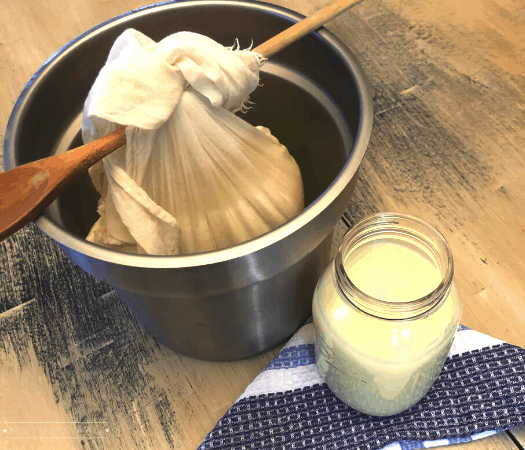
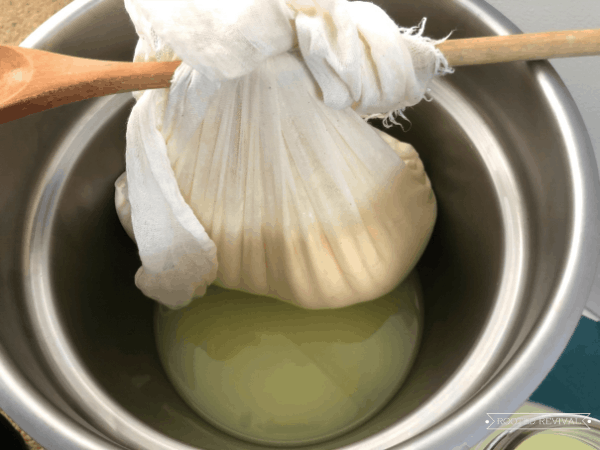
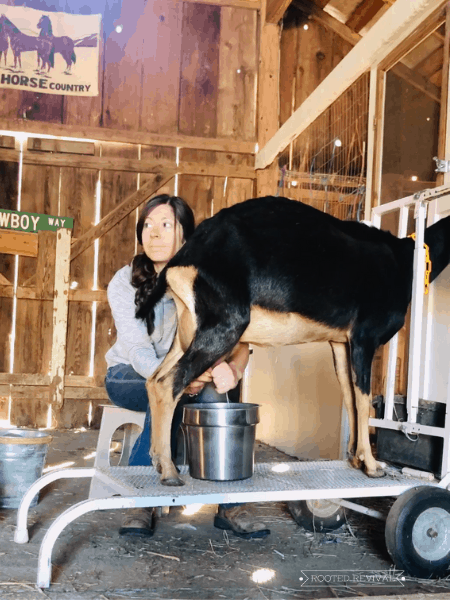
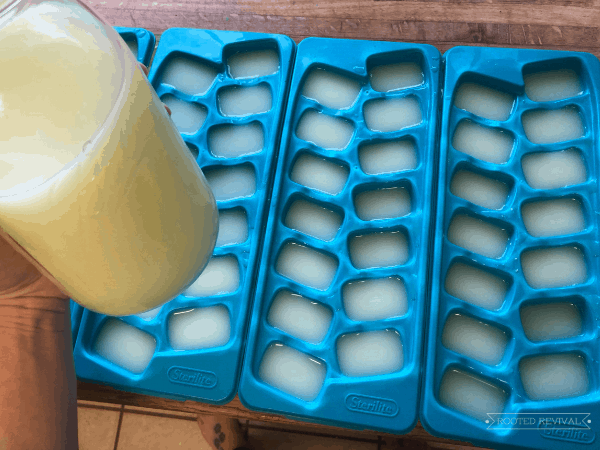
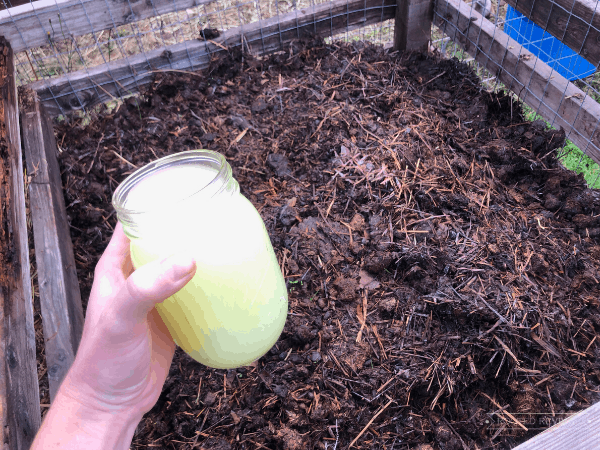



Katy
Friday 9th of October 2020
There's some great ideas here - I love the idea of boosting my chicken's and dog's health with this as an occasional nutritious treat.
Freezing it for later is a great idea - and is something I do with the dog's bone broth. Ooh - maybe I can experiment with adding a bit of whey to the broth once it cooled and before I freeze it! :)
Project Zenstead
Saturday 10th of October 2020
That's a great idea! What an easy way to add a boost of probiotics to the bone broth! That's a good idea for both people and pets!
Tessa
Tuesday 6th of October 2020
Um, why have I never thought to freeze my whey?! Thank you for that suggestion - duh!
Project Zenstead
Thursday 8th of October 2020
Right?! I was the same way and then it finally dawned on me! Now I always keep a good supply of it in the freezer!
Vladka
Thursday 1st of October 2020
Great ideas, just difficult to produce your own dairy when living in an apartment :(
Project Zenstead
Wednesday 7th of October 2020
Definitely harder, but you can always purchase from a small local dairy! :)
Rachael
Tuesday 29th of September 2020
This is such a good resource! I've used whey in quite a few ways, but this list has way more ideas than I'd ever thought of! I definitely want to try it for brining meat and for sure want to try it in the garden!